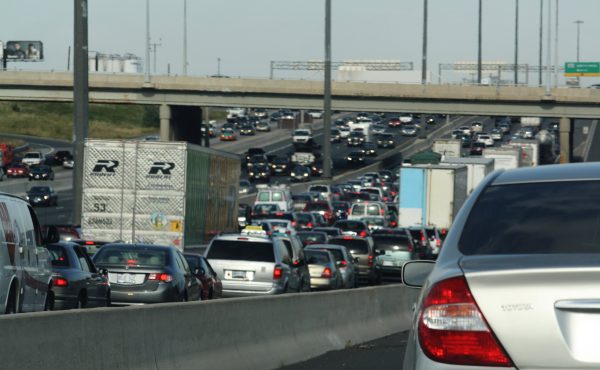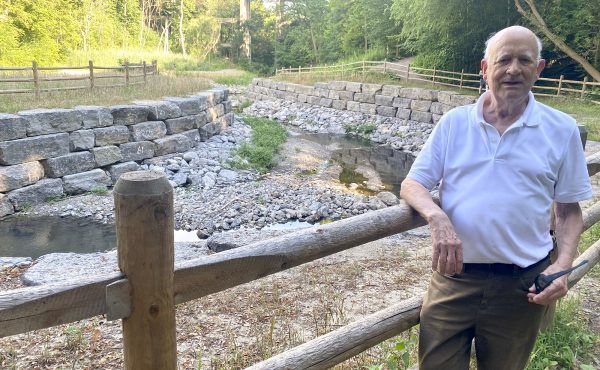
Wishing for a hidden agenda
Cross-posted to Spacing Votes
Jane Pitfield, the self-appointed defender of the Gardiner Expressway, alleges that Mayor David Miller has a “hidden agenda,” and points to timelines in the hefty technical report released yesterday as evidence that the decision is “a fait accompli.” The tragedy is that Miller’s agenda on this massive project is not hidden, it’s simply missing in action.
During his press briefing yesterday, the mayor stated quite clearly that he has no intention of championing an destiny-altering plan to remove the elevated section of the Gardiner between Spadina and the Don Valley Parkway and replace it with what the Toronto Waterfront Revitalization Corporation (TWRC) calls a “grand street.” It’s not a priority, he shrugged. Interestingly, when the questions moved from the Gardiner to the latest revelations about the island airport, Miller’s tone abruptly shifted from lawyerly disinterest to political outrage. He vowed to push Ottawa to scrutinize the operating certificate issued to Robert Deluce’s Porter Air, claiming that he’s “extremely nervous” about safety concerns raised by Community Air.
The irony of all this is that Miller can no longer do anything to stop Porter, but he’s definitely in a position to drive a decision, once and for all, about the Gardiner’s future. He could stake his job on a promise to deliver that grand street. Instead, he’s going to let those plans wander through the political wilderness while the cost of doing the job gets higher and the land that’s needed to stage the construction is lost to development.
Miller’s main objection is money. The TWRC estimates that the grand street, plus the Front Street Extension, will cost about $800 million, which really means $1 billion. He said he won’t consider anything until city officials have verified the costs and someone pulls together a business case to show how to pay for it. The problem is that no one’s hustling to create said business case, so, though Miller denies it, we’ve basically set up a chicken-and-the-egg dynamic. Until a gutsy politician comes along and declares, “This is necessary and I will make it happen,” nothing will happen.
Which is not to say the TWRC isn’t thinking about the numbers. Buried deep in the technical report is an economic impact analysis conducted by the accounting firm Deloitte & Touche. It concluded that the project would generate about $700 million in local spending, including 8,100 person years of employment. The feds and the province would see about $150 million in additional direct tax revenue, while the city would save $120 million in operating and capital costs associated with maintaining the elevated sections.
And that’s not all. Deloitte estimated that the project creates 2 million square-feet of development potential and frees up about 100 acres of under-used waterfront land. Over twenty years, the city would realize an additional $68 million in property taxes from the resulting development activity. Citing the experiences of Boston, San Francisco and New York, Deloitte said land values tend to jump by as much as 30 to 40% after the removal of elevated highways.
There’s no question that there are tough design and neighbourhood impact issues to be addressed (e.g., the configuration of the Front Street Extension). Yet it’s also clear from the report that there’s a significant financial upside to this project — for the city, the upper levels, the construction trades, and the development industry. So it behooves Miller to take command of the money issue and put forward a bold funding package that could involve a combination of highway tolls, upper level contributions, tax increment financing and development charges.
He should be running to win a mandate to proceed to the next step, which will make it happen. Now, that would be a real agenda.
photo by Andrew Louis



